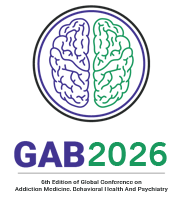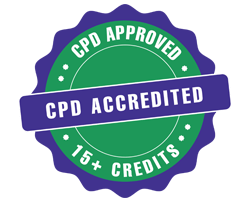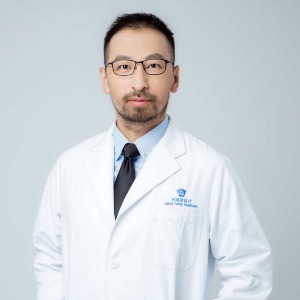Title : Stress-induced trauma syndrome in Chinese teenagers
Abstract:
Background & Rationale: Over the past decade, Chinese adolescents have reported rising levels of sleep disturbance, somatic complaints, academic avoidance, irritability, and episodes of self-harm. While many cases do not meet criteria for single-event post-traumatic stress disorder (PTSD), they display chronic, trauma-like reactions to persistent stressors—high-stakes schooling, family pressure, social comparison amplified by digital life, and community disruptions. Drawing on the clinical narratives, field notes, and caregiver toolkits compiled in Stress-Induced Trauma Syndrome in Chinese Teenagers, this paper proposes a practice-based construct—Stress-Induced Trauma Syndrome (SITS)—to describe and address these presentations within China’s cultural and educational context.
Concept & Definition: SITS refers to a pattern of trauma-like symptom clusters arising from cumulative, uncontrollable, and prolonged stress rather than a single catastrophic event. Core features include: (1) selectively compromised social function, (2) emotional numbing alternating with sudden outbursts particularly triggered by parent-child relationship, (3) avoidance of school- or peer-linked triggers, (4) negative self-appraisals (“I am the failure”), and (5) occasional self-harm or suicidal attempts particularly triggered by parent-child relationship. In contrast to classic PTSD, SITS is driven by micro-traumas—daily humiliations, perfectionist demands, unstable attachment cues, online shaming—that accrue into allostatic load.
Mechanisms (Bio-Psycho-Social-Spiritual):
- Neurobiology: Repeated uncontrollable stress sensitizes the amygdala–insula threat system, blunts prefrontal regulation, and keeps the HPA axis “idling high,” producing sleep fragmentation and somatic pain.
- Cognitive-emotional loops: Catastrophic appraisal (“one exam = my future”), attentional bias to threat (grades, likes, rankings), and shame-based identity scripts.
- Family & culture: Filial duty, one-chance gateway exams, parental over-scaffolding, “face” economy, and intergenerational anxiety spillover.
- Spiritual/meaning: Felt loss of purpose or worth (“I am only my scores”), with recovery often requiring re-anchoring identity beyond performance.
Phenotype & Red Flags: Typical entry complaints: headaches or stomachaches on school nights, “can’t switch off,” scrolling until 2 a.m., dread before tests, perfectionism with paralysis, and “going blank” during oral checks. Red flags include escalating self-injury, suicidal ideation, bullying/cyber-shaming exposure, substance misuse, and abrupt decline in functioning.
Screening & Triage (Measurement-Guided Care).
We recommend a brief, three-gate screen used in schools/clinics/tele-consults:
- Distress (sleep, mood, somatic pain, school refusal);
- Danger (self-harm thoughts/behaviors, abuse, extreme weight change);
- Disability (days missed, grades crash, social withdrawal).
Use short, validated mood/anxiety/trauma checklists where available; pair scores with function and safety questions. “Yellow” (mild–moderate) cases enter stepped self-help with coaching; “Orange” (moderate–severe) add structured therapy; “Red” (imminent risk) trigger crisis protocols and medical referral.
Intervention Framework (Stepped & Context-Sensitive).
- Psychoeducation that normalizes and names: explain SITS as the brain’s “alarm learning” under chronic pressure—treatable, not moral failure.
- Body-first regulation: sleep prescription (fixed wake time, evening light-down), brief breathing drills, movement snacks between study blocks; reduce late-night screens.
- Cognitive-behavioral tools: thought records targeting catastrophe/shame, graded exposure to feared situations (e.g., short oral answers, then full presentations), and values-based goal setting that decouples self-worth from scores.
- Family alignment: replace “Why can’t you…?” with collaborative problem-solving, set two non-negotiables (sleep, safety), and one flexible zone (study style). Coach parents in “praise effort, validate emotion, reinforce recovery behaviors.”
- Trauma-like symptoms address: re-register traumatic memory in the neuro-system as non-traumatic.
- School partnerships: quiet rooms for de-escalation, exam accommodations for acute cases, teacher gatekeeper training to recognize SITS signals, and anti-shame classroom language.
Ethics & Culture: Interventions must respect family honor, avoid public shaming, and protect adolescent privacy. Clinicians should translate skills into culturally resonant metaphors (e.g., “training the inner metronome,” “giving your brain a nightly curfew”). Faith communities and secular providers can cooperate around shared aims: safety, dignity, and hope.
Contribution & Call to Action: This paper consolidates a Chinese, practice-first language for trauma-like distress under continuous stress—SITS—and offers implementable algorithms suited to classrooms and homes. We invite partners to (1) standardize screening and stepped-care pathways, (2) co-develop teacher/parent micro-curricula, and (3) study outcomes that adolescents themselves value: sleep, belonging, courage to try again.
Conclusion: Not every teenager needs a diagnosis; many need a map. Naming Stress-Induced Trauma Syndrome gives schools and families a common map for recognizing, de-escalating, and reversing the brain’s “always-on” alarm. With small, repeatable practices—sleep first, safety always, skills together—Chinese adolescents can move from surviving school to recovering self, and from silent endurance to resilient hope.
Keywords: adolescence, chronic stress, trauma-like symptoms, China, school mental health, family systems, stepped care.




